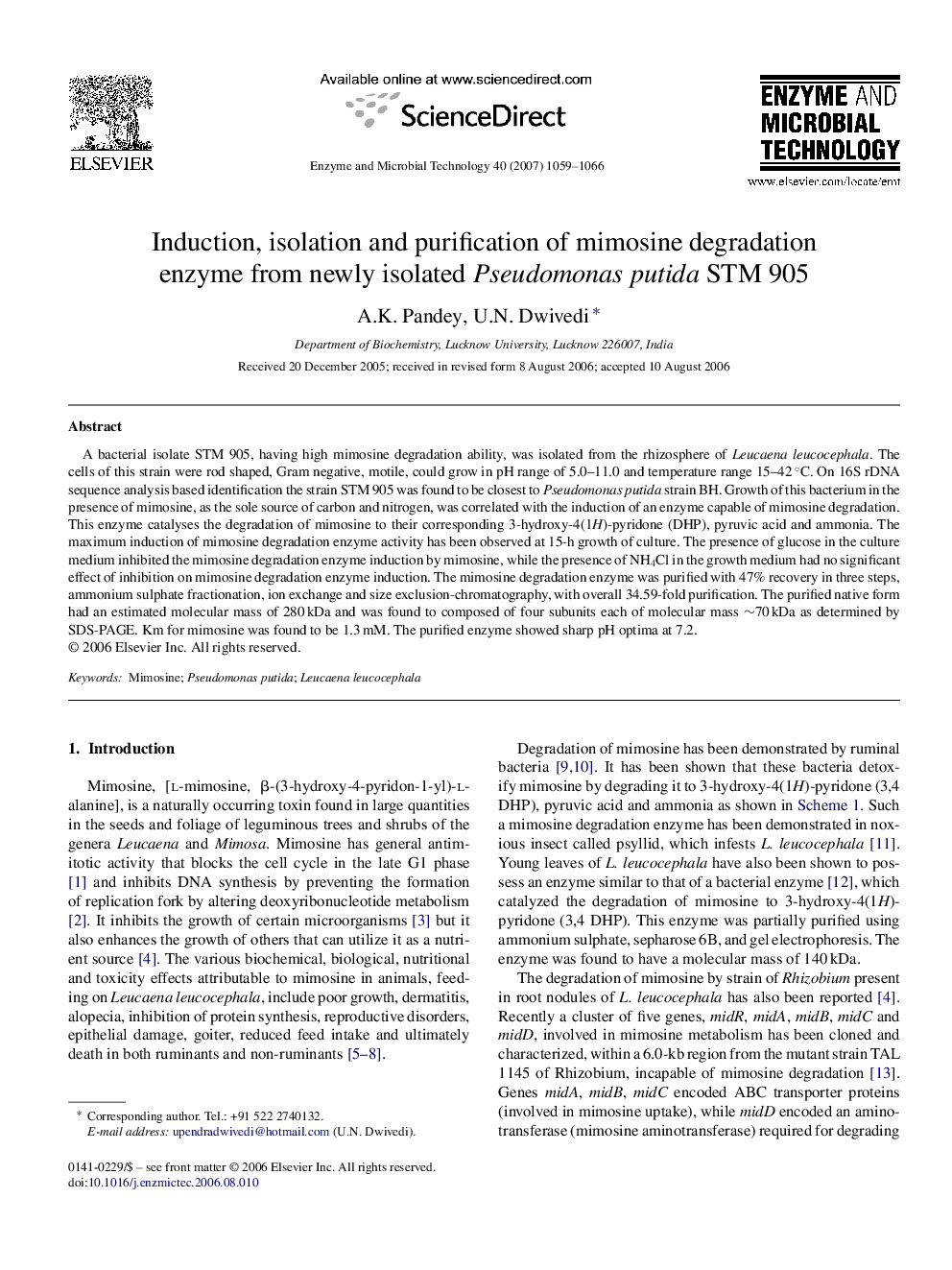| کد مقاله | کد نشریه | سال انتشار | مقاله انگلیسی | نسخه تمام متن |
|---|---|---|---|---|
| 18143 | 42713 | 2007 | 8 صفحه PDF | دانلود رایگان |

A bacterial isolate STM 905, having high mimosine degradation ability, was isolated from the rhizosphere of Leucaena leucocephala. The cells of this strain were rod shaped, Gram negative, motile, could grow in pH range of 5.0–11.0 and temperature range 15–42 °C. On 16S rDNA sequence analysis based identification the strain STM 905 was found to be closest to Pseudomonas putida strain BH. Growth of this bacterium in the presence of mimosine, as the sole source of carbon and nitrogen, was correlated with the induction of an enzyme capable of mimosine degradation. This enzyme catalyses the degradation of mimosine to their corresponding 3-hydroxy-4(1H)-pyridone (DHP), pyruvic acid and ammonia. The maximum induction of mimosine degradation enzyme activity has been observed at 15-h growth of culture. The presence of glucose in the culture medium inhibited the mimosine degradation enzyme induction by mimosine, while the presence of NH4Cl in the growth medium had no significant effect of inhibition on mimosine degradation enzyme induction. The mimosine degradation enzyme was purified with 47% recovery in three steps, ammonium sulphate fractionation, ion exchange and size exclusion-chromatography, with overall 34.59-fold purification. The purified native form had an estimated molecular mass of 280 kDa and was found to composed of four subunits each of molecular mass ∼70 kDa as determined by SDS-PAGE. Km for mimosine was found to be 1.3 mM. The purified enzyme showed sharp pH optima at 7.2.
Journal: Enzyme and Microbial Technology - Volume 40, Issue 5, 3 April 2007, Pages 1059–1066